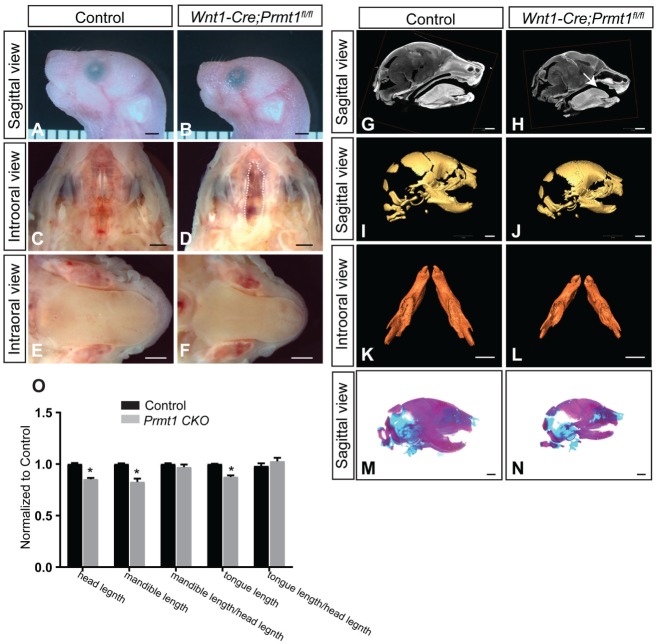Figure 1.
Wnt1-Cre;Prmt1fl/fl mice exhibit multiple craniofacial malformations at birth. (A, B) Sagittal views of newborn control and Wnt1-Cre;Prmt1fl/fl heads. Intraoral views of the (C, D) palate and (E, F) tongue of control and Wnt1-Cre;Prmt1fl/fl newborn mice. Dashed line in panel D indicates cleft palate. (G, H) Sagittal views of micro–computed tomography scans of control and Wnt1-Cre;Prmt1fl/fl newborn heads. Arrow in panel H indicates cleft palate. Three-dimensional reconstructions from micro–computed tomography scans of control and Wnt1-Cre;Prmt1fl/fl (I, J) heads and (K, L) mandibles. (M, N) Alizarin red/alcian blue staining of control and Wnt1-Cre;Prmt1fl/fl heads. (O) Normalized head length, mandible length, ratio between mandible length and head length, tongue length, and ratio between tongue length and head length. Error bars indicate SD. *P < 0.05. n = 4. Scale bar = 1 mm.

